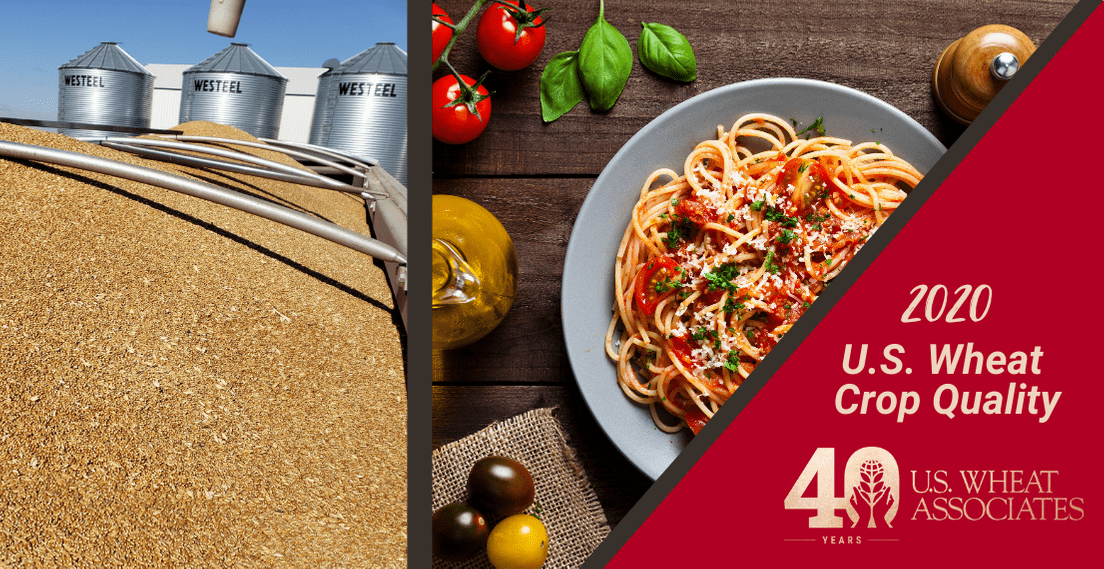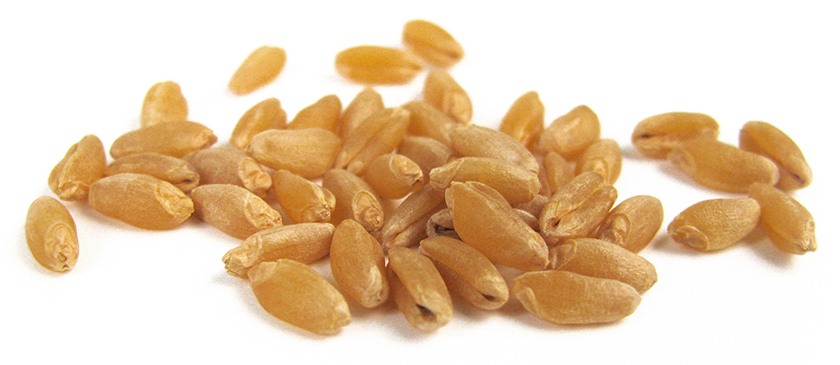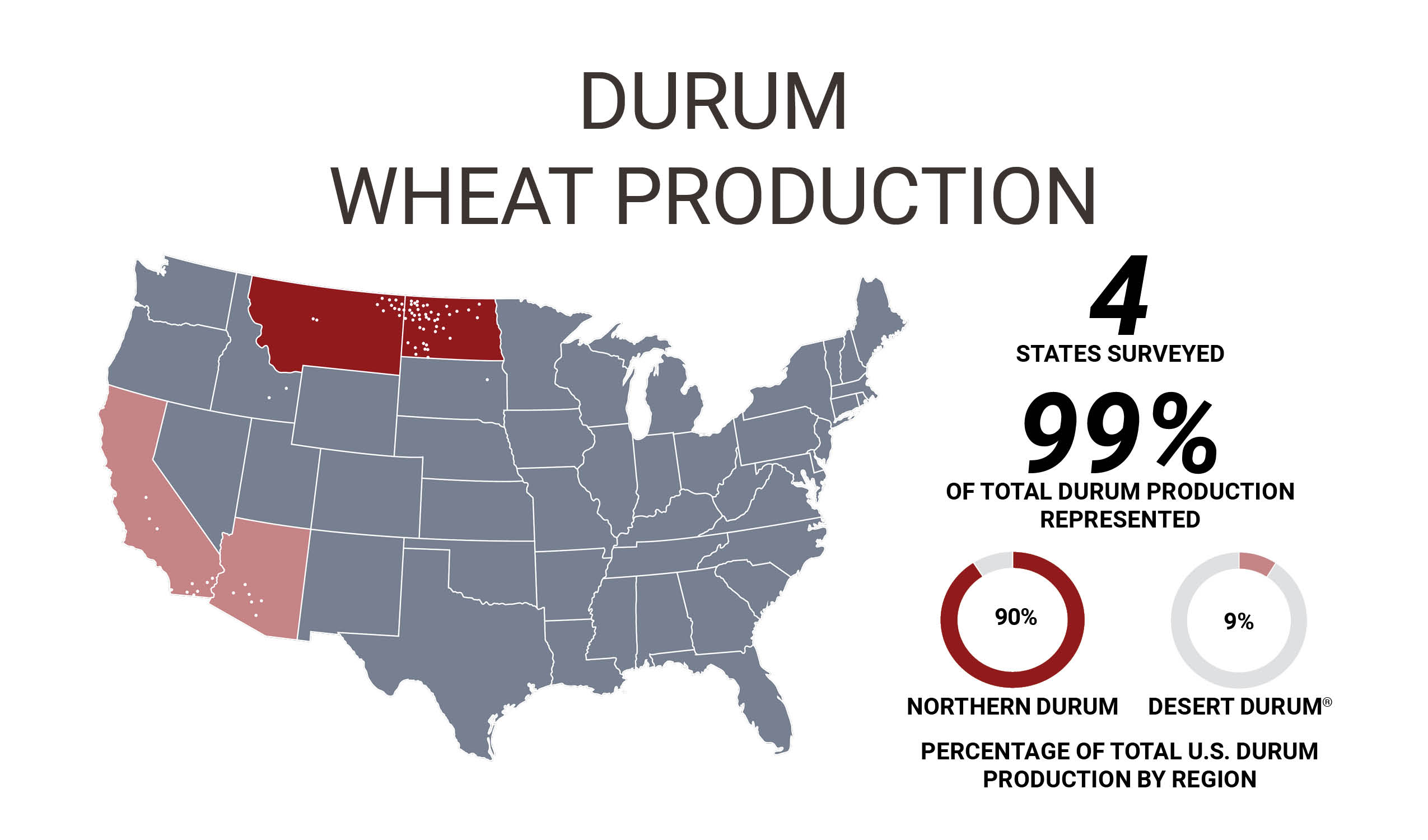2020 Records Larger, Improved Northern Durum Wheat Crop
The 2020 northern durum crop is notably larger than last year due to a significant increase in planted area with trendline yields, and a dry, steady harvest. Along with increased production, buyers will be pleased with the improved quality of the 2020 crop, especially on factors routinely valued in contract specifications. The crop boasts high test weights, high vitreous kernel contents and falling numbers, improved semolina color and a much lower incidence of DON compared with recent years.
U.S. Wheat Associates (USW) has posted the full 2020 Northern Durum Regional Report on its website here. USW previously reported on the 2020 Desert Durum® crop here, and posted the full 2020 Desert Durum® Regional Report and a Sacramento Valley Durum Report here and here, respectively.
Planting began in early May with slow initial progress due to cool conditions, but dry soils allowed for steady, accelerating progress with planting nearly complete by early June. Drought conditions eased with timely rains mid-season, boosting yield potential. Dry, warm conditions late-season accelerated crop maturity and limited disease pressures.
Harvest began in early August and progressed steadily on favorable weather until completed, ahead of average and well ahead of last year. Regional production is estimated at 1.7 million metric tons (MMT), up nearly 30% from 2019.
Here are highlights of data from the 2020 northern durum wheat crop.
Wheat and Grade Data:
- Grade – the overall average is U.S. No. 1 Hard Amber Durum (HAD); 87% of the crop grades U.S. No. 1 or 2 Hard Amber Durum (HAD), up markedly from 37% a year ago.
- Test Weight averages 62.2 lb/bu (80.9 kg/hl), well above last year and the 5-year averages.
- Total defects average of 1.5% is lower than 2019, as disease pressures were relatively low and harvest weather was near ideal.
- Vitreous kernel (HVAC) content is 88%, up sharply from 64% in 2019, and also higher than the 5-year averages. Nearly two-thirds of the samples were above 90% HVAC.
- Wheat Protein averages 13.4% (12% mb), lower than both 2019 and the 5-year averages.
- 1000 Kernel Weight average of 46.7 g (14% mb) is exceptionally high, above last year and nearly 6 g higher than the 5-year average, due to excellent conditions during kernel development.
- Wheat Falling Number average of 419 sec, is well above 2019 and higher than the 5-year averages and indicative of sound wheat.
- DON average is 0.2 ppm, lower than both 2019 and the 5-year averages and disease pressures were minimal in 2020.
Semolina and Processing Data:
- Semolina Extraction average is 58.5%, up from 2019. Commercial mills will likely see a greater increase in extraction due to high HVAC levels and excellent kernel qualities.
- Color values are higher than 2019 for both brightness and yellowness.
- Gluten index values are 74.4%, higher than both 2019 and the 5-year averages.
- Semolina color values are higher than a year ago, for both brightness and yellowness, and more similar to the 5-year average.
- Cooked spaghetti evaluations show lower values compared to last year and the 5-year averages with lower cooked weight and less cooked firmness.
- Mixing properties reveal a slightly weaker crop compared to a year ago, a 6 (scale 1-8), but stronger than the 5-year averages.
Buyers are encouraged to review their quality specifications to ensure that their purchases meet their expectations.
View other summaries of the 2020 U.S. wheat crop:
Hard Red Winter
Hard Red Spring
Hard White
Soft White
Soft Red Winter
View the full 2020 U.S. Crop Quality Report and other related resources here.




